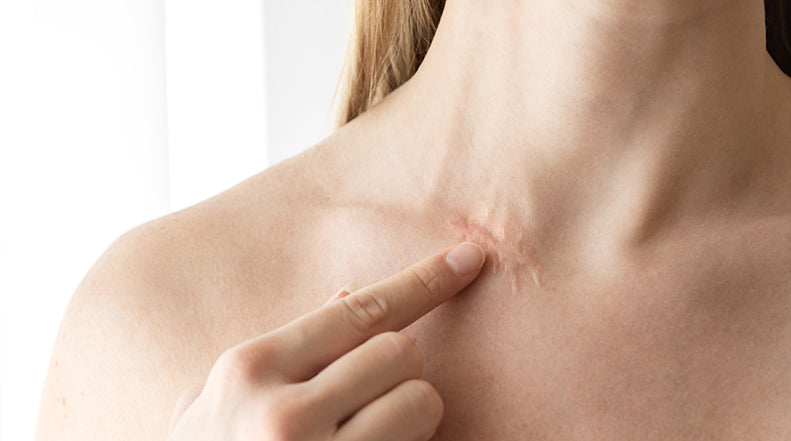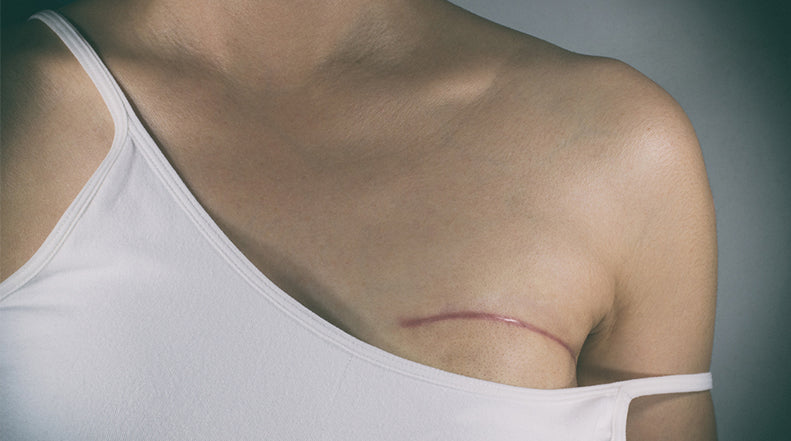Do Wounds Heal Better When Exposed to Air?

Do you remember falling off the jungle gym as a kid and getting a nasty gash on your leg? Maybe it required stitches, but more likely the school nurse gave you some iodine and slapped a bandaid on it, telling you not to forget to take the bandaid off after you got home that night to let your wound ‘breathe’. Chances are, the scar remains.
It has been a long-held belief that wounds heal most quickly after they have been exposed to air for a period of time. Apparently, this belief is merely an old-wives tale, and experts say that keeping wounds moist will not only facilitate more rapid recovery, but will aid in preventing scabbing and scarring. In this case, allowing the skin to ‘breathe’ will not speed up the healing process, simply because of the fact that exposing an open wound to air has a dehydrating and tightening effect. Remember how that scab used to look like it was ‘pulling’ at the skin surrounding it?
Skin cells do not reproduce in dry environments; therefore moisture is needed if new skin is to be given a chance for growth. This is the reason dry skin always flakes off. Dry skin is only a group of dead skin cells that have risen to the surface of the skin, and as humans, we are constantly shedding our dead (dry) skin cells and growing new ones in a deeper layer of the skin. The process of wound healing is not the same, but the idea is similar in that dry, dehydrated skin cells do not flourish. Although scabbing was once thought to be a barrier to bacteria and therefore infection, letting a wound scab is not advised these days, primarily because of the emphasis on reducing scarring.
There are ways to treat a wound---- specifically Moist Wound Healing---- that negate both scabbing, scarring and infection. Appropriate precautions must be taken, and the treatment is best performed in a controlled and monitored environment. Keeping wounds moist with specific dressings and coverings in a closely monitored environment allows the skin to regenerate more quickly (sometimes with the help of skin grafts and cell transplantation) and prevent scabs---- and later scars--- from forming. Why is this the case? Read on for more about moist wound healing, a practice founded doctor George Winter in the 1960’s. Winter would later determine that moist wound healing was twice as effective as the airing out method that was previously used.
DRESSINGS AND TREATMENTS USED IN MOIST TREATMENT OF WOUNDS
Using such treatments as bioactive molecules, analgesics and antimicrobials on a moist wound allows for more rapid cell and skin regrowth. Silver, for example, has been used for its antimicrobial properties and is a common treatment for certain types of wounds, burns particularly.
A controlled environment also makes it less likely for the wound to become infected, giving it a greater chance to heal. The moist environment also limits inflammation (not to be confused with the inflammation phase of normal wound healing) that can ultimately cause scabbing and scarring.
Wounds are also occasionally treated with timed water vapor treatments, making the process extremely controlled and precise. Because of the possibility of infection, wounds treated in moist environments must be closely monitored and treated with various antibacterial ointments or serums. Special dressings made of polyurethane can also be applied to maintain optimal moisture levels. Gauze is often not recommended due to its drying properties as well as the potential for injury or disruption during removal, as force is often necessary. As you can see, the process of moist wound healing must be extremely precise in order to minimize potential problems.
ACUTE VERSUS CHRONIC WOUNDS
There are two types of wounds: acute and chronic. Acute wounds are simply what you would expect: abrasions, cuts or gashes in the skin. Chronic wounds are acute wounds that have not healed properly in a timely way, making the process of healing an ongoing issue. Chronic wounds are usually ulcers, the treatment of which is often different than a regular acute wound. However, although the treatment is often more involved and takes place in a hospital or clinic, the theory is the same. Adding moisture in a controlled manner (this includes providing oxygen, antibacterial agents, and other preventative measures) will help the wound heal faster and with less chance of infection and scarring.
However, if you did develop a scar, NewGel+ can treat it---- even if it’s old. NewGel+ products are formulated to flatten and fade all different types of scars with advanced technology that’s been clinically proven to be effective. Scarring can be traumatic and upsetting, which is why it is important to talk to your doctor to determine the best course of treatment for your wound.




Comments